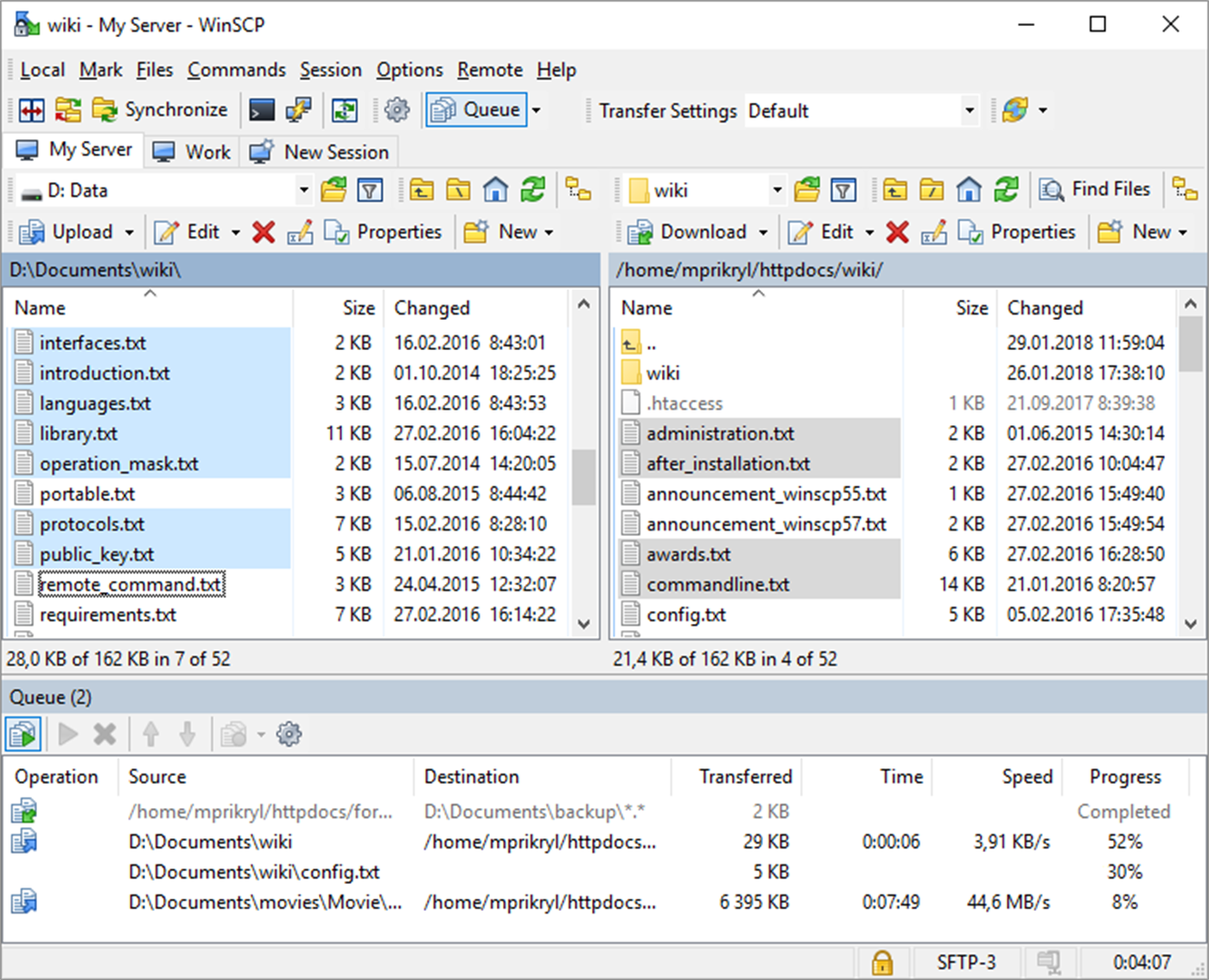
WebDAV requests act on Web resources, collections, and properties as described in Information elements for distributed Web authoring. Working with resources, collections, and properties The response body generally contains the result of method executionsuch as a document.Ĭlasses in the WebDAV client API provide methods for easily constructing and sending specific WebDAV requests and processing responses.įor more information about WebDAV, search on the Web for rfc2518the WebDAV specification. The response header contains information about the response, such as the HTTP version used by the server, along with status codes and messages. Similarly, a WebDAV response contains a header and optional body.

The request body defines additionaland perhaps more complexparameters if necessary. The request header contains the method, target resource, HTTP version, and a sequence of key/value pairs containing parameters for the method.
#WEBDAV CLIENT. CODE#
The result of each request is returned as a WebDAV response that includes a status code to indicate success or the reason for failure.Ī WebDAV request consists of a header and a body. The WebDAV client API provides methods that invoke CM functions by sending WebDAV requests. Getting and setting custom metadata values in a document ĭeleting, copying, moving, and renaming resources and collections.You need to build your own user interface, but the API provides the logical underpinnings for invoking key CM functions from your client:Ĭreating documents using custom templates You use the WebDAV client API to design a custom authoring tool with WebDAV access to the exteNd Director CM subsystem for managing collaborative interactions with your content.

To run a WebDAV client, you must add the following JAR files to your client's classpath at runtime: These JAR files are installed with exteNd Director in the following location in the exteNd Director Utilities\Client directory: To use the WebDAV client API, you must add the following JAR files to your project classpath:Ĭontains relevant Slide client API classesĬontains exteNd Director WebDAV client API classes

For example, you can build a WebDAV client that assigns categories to documents, associates custom metadata with content, and creates content using custom templates called document types as defined in the CM subsystem.įor more information about Slide, see the Jakarta Slide project Web site. These classes contain helper and utility methods that encapsulate the low-level Slide methods and add logic that tightly integrates with the specialized capabilities of the exteNd Director CM subsystem. The exteNd Director WebDAV client API adds a level of abstraction by providing wrapper classes around the Slide client API. Managing the namespace (for creating, moving, copying, and deleting content) Java client applications can access the Slide content management framework directly through a set of Java classes that implement WebDAV methods and other low-level logic in these functional areas: Slide is a low-level framework that can be used to develop a consistent interface for manipulating binary content in a variety of data stores using the WebDAV protocol. The WebDAV client API is based on the Jakarta Slide content management framework and is designed to work with the exteNd Director CM subsystem. Issuing WebDAV requests from a Java client Programming practices using utility methods Programming practices using helper methods This chapter describes an API provided with the exteNd Director WebDAV service for developing a custom WebDAV client that takes advantage of the specialized features of the exteNd Director Content Management (CM) subsystem to create and administer content. CHAPTER 10 Building Your Own WebDAV Client


 0 kommentar(er)
0 kommentar(er)
